Canon EOS 1D Mk IV – Hands-on Preview
Canon EOS 1D Mk IV – Hands-on Preview
The ultimate press photographer's camera just got even better.
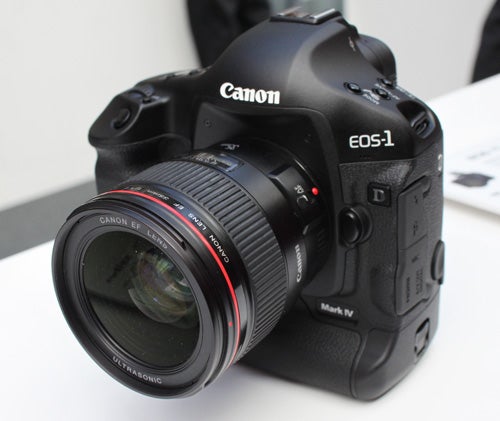
Verdict
As I reported last week, Canon has just announced the launch of the new EOS 1D Mk IV. It’s not going on sale until the end of December, but earlier this week I attended the Canon Pro Photo Solutions 09 show at the Business Design Centre in London, where I was able to try out a pre-production sample of the new camera.
From the launch of the original EOS-1D in 2001, the 1D series has been the camera of choice for many of the world’s top professional photographers, particularly photojournalists, sports and wildlife photographers, for whom its high speed performance, reliability and robust weatherproof construction are just as important as its class-leading image quality. With the 1D Mk IV Canon has responded to feedback from its professional users and further developed and improved all of these qualities. I suspect that there may also have been some impetus to upstage the Nikon’s specialist photojournalism camera the D3s, which is the EOS-1D Mk IV’s only real competition.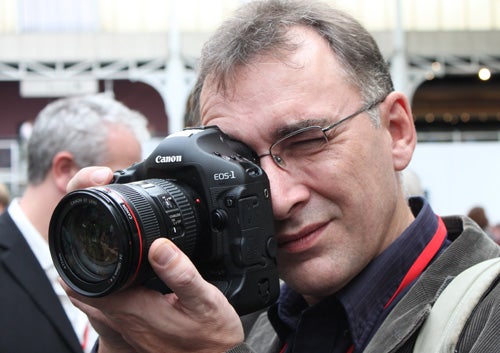
Handling the 1D Mk IV for the first time it’s impossible not to be impressed. It’s a big, heavy camera weighing almost 1.2Kg even without a lens, and the immediate impression is a feeling of solid reliability and competence. Canon has put as much effort into the ergonomics of the body as into the performance of the internal components, and it shows. In both vertical and horizontal positions the handgrip is comfortable and secure, and the controls fall perfectly under the fingers for fast and efficient operation. The improved LCD monitor is also superb, a three-inch 920,000-dot screen with a viewing angle of 170 degrees. In order to cut down on glare and internal reflection the gap between the screen itself and the scratch-resistant glass cover has been filled in with a transparent plastic, which also has the effect of making the image on the screen appear closer to the surface. The result is a clear, bright and exceptionally sharp monitor that works well in all lighting conditions.
The most significant improvement to the specification is the newly developed 16.1-megapixel CMOS sensor. Unlike its full-frame sibling the EOS-1Ds or rival D3s, the EOD-1D Mk IV uses an APS-H sized sensor measuring 27.9mm x 18.6mm, giving a crop factor of 1.3x compared to a 35mm camera. By comparison, the APS-C sensors used in most consumer DSLRs measures approximately 22.2 x 14.8mm, with a crop factor of 1.6x (i.e. Canon) or 1.5x (i.e. Nikon).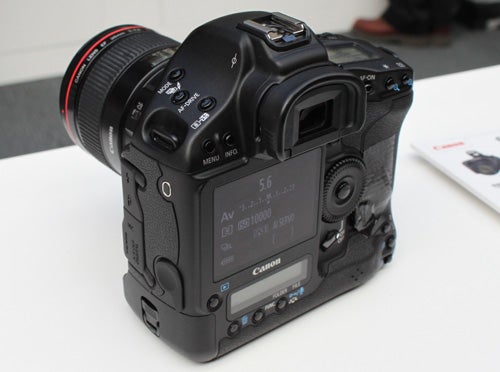
The new sensor is coupled with the same dual DIGIC 4 processors that power the superb EOS 5D Mk II, and they give the 1D Mk IV truly astonishing performance. In continuous shooting mode it can rattle off full-resolution shots at 10 frames a second, with full continuous autofocus and a buffer large enough for a sequence of 121 shots. The Nikon D3s can shoot at 11fps, but only in its 5MP DX crop mode.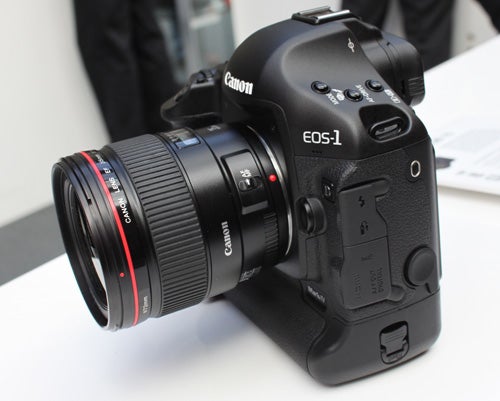
The combination of Canon-designed sensor and processor also gives the EOS-1D Mk IV another superlative to add to its growing collection. It has an ISO range of 100 to 12,800, which is expandable to an amazing 50 – 102,400 ISO, which as fas as I’m aware is the highest sensitivity of any current digital SLR camera. Unfortunately the pre-production sample that I was allowed to play with had its card hatch securely taped up, so I don’t have ant sample shots to show you, but I’m assured that picture shot at this amazing speed are quite usable. I’m looking forward to finding out for myself.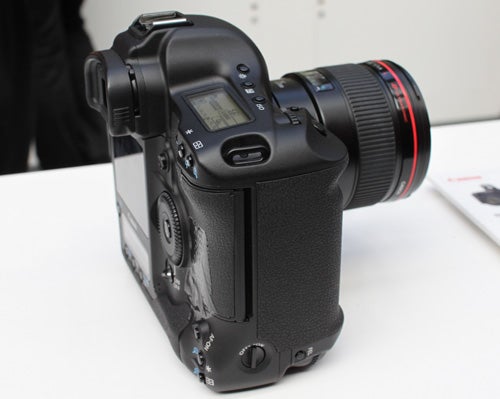
The other major improvement for the EOS-1D Mk IV is the new 45-point autofocus system, which features 39 of the more sensitive and accurate cross-type sensors, which unusually are positioned around the outside of the focus area, with the six conventional strip-type sensors in a line across the middle of the frame. I was able to try the AF system briefly with a couple of different lenses, and I can confirm that it is extremely fast, the tracking function works superbly and it appears to have no problem even when focusing on dark low contrast subjects through a 400mm telephoto lens. It would probably take fairly specialised equipment to determine if it’s faster than Nikon’s much-praised 51-point Multicam AF system, but suffice it to say that it is certainly fast enough for even the most demanding professional.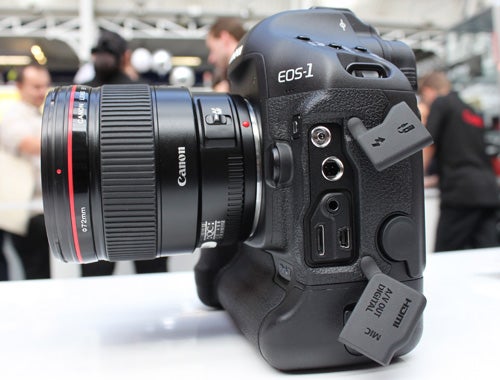
The EOS-1D Mk IV is the latest digital SLR to feature HD video recording. It uses the same system as the popular EOS 5D Mk II, with full 1080p video at a range of different frame rates. It can record stereo audio via an optional external microphone, and can play back on a HDTV via its HDMI output jack. It can also shoot at 720p or VGA resolutions at higher frame rates for slow motion effects. Like the 5D Mk II it also allows full manual exposure control while filming, providing creative options such as control over depth of field.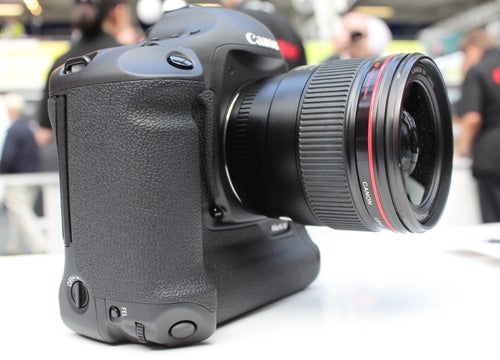
Until I can get a production EOS-1D Mk IV in for a full review in a couple of months (and how I’m looking forward to that!) I can’t say anything about the image quality, or indeed anything more about performance, so I hope this preview will be enough to whet your appetite. Between this camera, the EOS 5D Mk II and the EOS 7D that I’ll be reviewing next week, the second half of 2009 is looking pretty good for Canon digital cameras.
—-
Trusted Score
Features
| Camera type | Digital SLR |
| Megapixels (Megapixel) | 16.1 Megapixel |
| Optical Zoom (Times) | 1x |

